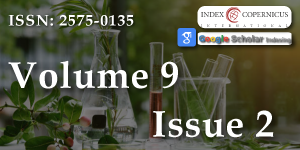Shortcomings of Present Studies on the Effects of Invasive Plants on Soil Microbial Communities
Main Article Content
Abstract
One of the principal reasons for the successful invasion of invasive plants is that these invaders can facilitate the succession of soil microbial communities in their rhizosphere. This study presents a summary of the effects of invasive plants on soil microbial communities. The effects of invasive plants on soil microbial communities encompass both indirect and direct effects. These include changes in the physicochemical properties (e.g., pH, moisture, and electrical conductivity); alterations in enzyme activities related to nutrient (especially nitrogen) cycling, and nutrient (especially nitrogen) availability levels in soil; variations in the growth performance of invasive and native plants, and the species composition of native plant communities; and changes in the alpha diversity, the relative abundance, the metabolic activity, and the community structure of soil microorganisms (especially the dominant microbial species). In general, invasive plants can cause changes in the structure of soil microbial communities (particularly functional microorganisms, such as the mycorrhizal fungi and N-fixing bacteria) in invaded ecosystems in ways that provide positive feedback for their invasiveness and negative feedback for the growth performance of native plants. This review also considers the limitations of existing studies on the effects of invasive plants on soil microbial communities. The results will provide a solid theoretical basis for elucidating the role of the interactive feedback between invasive plants and soil microbial communities in driving the successful invasion of invasive plants.
Article Details
Copyright (c) 2025 Du Y, et al.

This work is licensed under a Creative Commons Attribution 4.0 International License.
1. Gundale M, Kardol P. Multi‐dimensionality as a path forward in plant‐soil feedback research. J Ecol. 2021;109:3446–65. Available from: https://doi.org/10.1111/1365-2745.13679
2. Rastogi R, Qureshi Q, Shrivastava A, Jhala YV. Multiple invasions exert combined magnified effects on native plants, soil nutrients, and alter the plant-herbivore interaction in dry tropical forest. For Ecol Manage. 2023;531:120781. Available from: https://ui.adsabs.harvard.edu/link_gateway/2023ForEM.53120781R/doi:10.1016/j.foreco.2023.120781
3. Cheng H, Wang S, Wei M, Yu Y, Wang C. Alien invasive plant Amaranthus spinosus mainly altered the community structure instead of the α diversity of soil N-fixing bacteria under drought. Acta Oecol. 2021;113:103788. Available from: https://m.x-mol.net/paper/detail/1434385210187509760
4. Lorenzo P, Rodríguez-Echeverría S, González L, Freitas H. Effect of invasive Acacia dealbata Link on soil microorganisms as determined by PCR-DGGE. Appl Soil Ecol. 2010;44:245–51. Available from: https://ui.adsabs.harvard.edu/link_gateway/2010AppSE..44..245L/doi:10.1016/j.apsoil.2010.01.001
5. Laungani R, Knops JM. Species-driven changes in nitrogen cycling can provide a mechanism for plant invasions. Proc Natl Acad Sci U S A. 2009;106:12400–5. Available from: https://doi.org/10.1073/pnas.0900921106
6. Vogelsang KM, Bever JD. Mycorrhizal densities decline in association with nonnative plants and contribute to plant invasion. Ecology. 2009;90:399–407. Available from: https://doi.org/10.1890/07-2144.1
7. Kiers ET, Duhamel M, Beesetty Y, Mensah JA, Franken O, Verbruggen E, et al. Reciprocal rewards stabilize cooperation in the mycorrhizal symbiosis. Science. 2011;333:880–2. Available from: https://doi.org/10.1126/science.1208473
8. Sanon A, Beguiristain T, Cébron A, Berthelin J, Sylla SN, Duponnois R. Differences in nutrient availability and mycorrhizal infectivity in soils invaded by an exotic plant negatively influence the development of indigenous Acacia species. J Environ Manage. 2012;95 Suppl:S275–9. Available from: https://doi.org/10.1016/j.jenvman.2011.01.025
9. Dong LJ, Ma LN, He WM. Arbuscular mycorrhizal fungi help explain invasion success of Solidago canadensis. Appl Soil Ecol. 2021;157:103763. Available from: https://ui.adsabs.harvard.edu/link_gateway/2021AppSE.15703763D/doi:10.1016/j.apsoil.2020.103763
10. Hartnett DC, Wilson GW. The role of mycorrhizas in plant community structure and dynamics: Lessons from grasslands. Plant Soil. 2002;244:319–31. Available from: https://www.researchgate.net/publication/263068978_The_role_of_mycorrhizas_in_plant_community_structure_and_dynamics_Lessons_from_grasslands
11. Wang C, Cheng H, Wang S, Wei M, Du D. Plant community and the influence of plant taxonomic diversity on community stability and invasibility: A case study based on Solidago canadensis L. Sci Total Environ. 2021;768:144518. Available from: https://doi.org/10.1016/j.scitotenv.2020.144518
12. Wang C, Jiang K, Liu J, Zhou J, Wu B. Moderate and heavy Solidago canadensis L. invasion are associated with decreased taxonomic diversity but increased functional diversity of plant communities in East China. Ecol Eng. 2018;112:55–64. Available from: http://dx.doi.org/10.1016/j.ecoleng.2017.12.025
13. Montero-Castaño A, Aizen MA, González-Moreno P, Cavallero L, Vilà M, Morales CL. Influential factors and barriers change along the invasion continuum of an alien plant. Biol Invasions. 2023;25:2977–91. Available from: https://link.springer.com/article/10.1007/s10530-023-03087-3
14. Rebolo IF, Zirondi HL, Fidelis A, Christianini AV. Native ants help to spread an invasive African grass in the Cerrado. Biotropica. 2022;54:6–11. Available from: https://doi.org/10.1111/btp.13035
15. Ahmad R, Rashid I, Hamid M, Malik AH, Khuroo AA. Invasion shadows in soil system overshadow the restoration of invaded ecosystems: Implications for invasive plant management. Ecol Eng. 2021;164:106219. Available from: https://www.scribd.com/document/690078049/Ahmad-2021-Invasion-Shadows
16. Xu Z, Guo X, Caplan JS, Li M, Guo W. Novel plant-soil feedbacks drive adaptation of invasive plants to soil legacies of native plants under nitrogen deposition. Plant Soil. 2021;467:47–65. Available from: https://link.springer.com/article/10.1007/s11104-021-05057-x
17. Li C, Li Y, Xu Z, Zhong S, Cheng H, Liu J, Yu Y, Wang C, Du D. The effects of co-invasion by three Asteraceae invasive alien species on plant taxonomic and functional diversity in herbaceous ruderal communities in southern Jiangsu, China. Biol Futura. 2024:1–13. Available from: https://doi.org/10.1007/s42977-024-00202-w
18. Wang C, Yu Y, Cheng H, Du D. Which factor contributes most to the invasion resistance of native plant communities under the co-invasion of two invasive plant species? Sci Total Environ. 2022;813:152628. Available from: https://doi.org/10.1016/j.scitotenv.2021.152628
19. Park S, Kim JH, Lee EJ. Resistance of plant communities to invasion by tall fescue: An experimental study combining species diversity, functional traits and nutrient levels. Basic Appl Ecol. 2022;58:39–49. Available from: https://doi.org/10.1016/j.baae.2021.12.002

